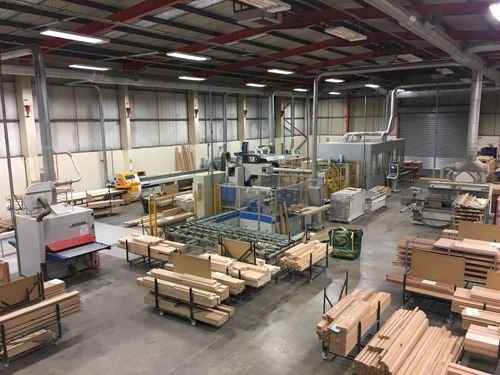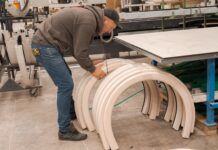
 The BWF’s Joinery State of Trade Survey Q3 2017 has indicated that the medium-term prospects of the joinery industry remain sound, but growing concerns over skill, raw materials and the implications of Brexit are fostering long-term uncertainty.
The BWF’s Joinery State of Trade Survey Q3 2017 has indicated that the medium-term prospects of the joinery industry remain sound, but growing concerns over skill, raw materials and the implications of Brexit are fostering long-term uncertainty.
BWF policy and communications executive, Matt Mahony, commented: “Labour shortages and raw materials costs continue to bite but sales growth is still expected, at least in the medium term, with order books holding up well and more than half of firms operating at over four fifths of their capacity.
“Investment is set to increase with manufacturing equipment and product improvement the main targets but large increases in spending are also anticipated for R&D and e-business. Longer-term growth expectations appear to have been dampened slightly, however, and this tallies with broader construction industry research suggesting that slower economic growth and signs of an emerging weakness in construction activity outside of private housing are beginning to have an impact on spending decisions.
“Labour availability is also becoming a growing concern and this is now anticipated by survey respondents to become the biggest constraint on activity over the next year. New training and apprenticeship reforms, not to mention industry-led skills initiatives, will need to deliver for the woodworking sector and BWF has been redoubling its efforts to support the joinery skills agenda.”
Key points from the BWF Joinery State of Trade Survey Q3 2017 include:
- A balance of 44% of respondents reported an increase in sales volumes over the last quarter, with 46% reporting an increase over the last year. This corresponds with the 42% of respondents reporting a quarterly increase in the previous survey.
- Manufacturers felt that sales volumes would improve in the next quarter, with a balance of 40% predicting an increase for Q4 2017, and a balance of 36% predicting an increase over the next year.
- 26% of companies reported a current order book of future work extending beyond three months – down 16% from the previous quarter – with 53% saying that their order book extended from between one and three months.
- Labour availability was listed as the most likely constraint on output over the next year by 35% of respondents. Demand and capacity came next, with 29% and 17% of respondents feeling that they were most likely to constrain output.
- 34% of respondents on balance reported increasing their labour force in the last year, with 37% of respondents anticipating an increased labour force over the next year.
- Raw material costs were noted as the main inflationary factor for unit costs for 96% of respondents, with wages/salaries increases pushing up unit costs for 82% of respondents on balance.
- Over the previous year a balance of 49% of respondents had invested in improving their products with 43% investing in their plant/equipment.
- Investment in in product improvement was set for the highest capital investment over the next year, with a balance of 54% planning to invest and with 50% set to invest plant/equipment.



